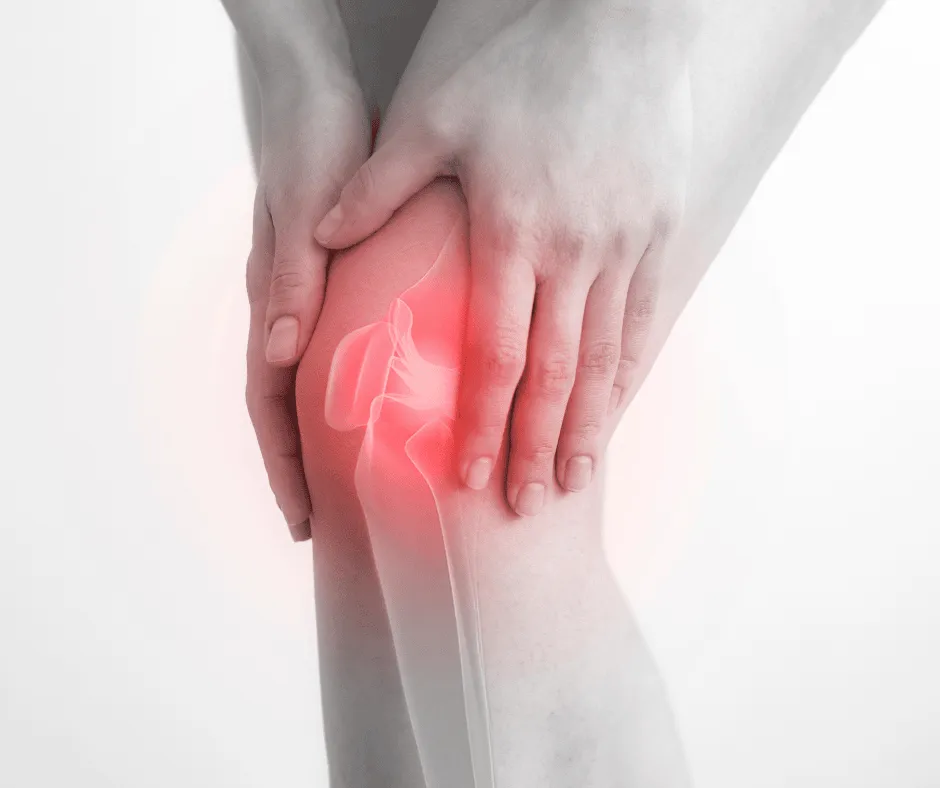Knee Pain Relief
Your Pathway to Knee Pain Relief
In the journey of life, knee pain can often emerge as an unwelcome companion, causing discomfort to people of various ages. From young athletes to active seniors, knee pain is a widespread issue that doesn't discriminate. It may be born out of a sudden injury, like a torn ligament or ruptured cartilage, or it could be the byproduct of a medical condition such as arthritis, gout, or even an infection.
Thankfully, minor knee pain often responds positively to strategies such as physical therapy, using knee braces, maintaining a healthy lifestyle, and can often provide significant relief. Here at PhysioFit, we understand that your journey to pain-free living is unique. We're here to provide customized, evidence-based treatments with a fitness-based approach to alleviate your knee pain effectively, helping you return to your everyday activities.
What You Should Know
Aging, injury, or recurring stress on the knee are the leading causes of knee pain.
Prevalent knee issues encompass sprains or strains in ligaments, cartilage tears, tendonitis, and arthritis.
A proper diagnosis of a knee problem involves a thorough evaluation from a professional or a medical examination, supplemented by diagnostic procedures such as MRIs, CT scans, X-rays, or arthroscopy.
Depending on the type and severity of the condition, both non-operative and surgical treatments are available to alleviate knee pain and problems.

4 of the Most Common Knee Problems
The knee, a complex and integral joint in the human body, can be prone to several issues. These complications often result from natural aging, consistent stress on the knee joint, or an injury. Let's discuss four of the most common knee problems:
Strained or Sprained Knee Ligaments and Muscles: Often the result of a sudden blow or twist to the knee, strains or sprains affect the ligaments and muscles in your knee. The typical symptoms include pain, swelling, and difficulty in walking.
Torn Cartilage: Our knees consist of menisci, which are pads of connective tissue acting as shock absorbers while providing stability. These can tear due to knee trauma, often coinciding with sprains. The usual treatment ranges from wearing a supportive brace to undergoing surgery, depending on the severity of the tear.
Tendonitis: This refers to the inflammation of tendons from overuse during activities like running, jumping, or cycling. An example is patellar tendonitis, also known as "jumper's knee." It's common among sports enthusiasts who partake in high-impact activities like basketball, where the repeated force of landing can strain the tendon.
Arthritis: Osteoarthritis, the most common type affecting the knee, is a degenerative condition where the joint cartilage wears away gradually, often affecting middle-aged and older individuals. Excessive stress on the joint, due to repeated injury or being overweight, can cause it. Another form, Rheumatoid arthritis, can cause inflammation and destruction of the knee cartilage, often affecting individuals at a younger age than osteoarthritis does.
Remember, if you resonate with any of the symptoms or conditions mentioned, we highly recommend making an appointment with us for a thorough evaluation and personalized treatment plan.
Preventing Knee Pain
While it might be impossible to completely avoid knee pain, these strategies can aid in averting injuries and slowing down joint wear:
Maintain a Balanced Weight: Keeping your weight in check is one of the most beneficial actions for your knees. Each extra pound exerts additional stress on your joints, heightening the likelihood of injuries and osteoarthritis.
Condition Yourself for Sports: To equip your muscles for the rigors of sports activities, incorporate conditioning exercises into your routine.
Aim for Perfection in Practice: Strive to perfect your technique and movement patterns for any sport or physical activity. Professional coaching can be valuable in this aspect.
Strengthen and Flex: Weak muscles often precipitate knee injuries. Strengthening your quadriceps and hamstrings, which are front and back muscles of your thighs, will help bolster your knee support. Engage in balance and stability training for more effective muscle coordination around your knees.
Remember, tight muscles can also lead to injuries, so flexibility exercises should be a regular part of your workout regime.
Exercise Wisely: If you're dealing with osteoarthritis, chronic knee pain, or frequent injuries, you may need to reconsider your exercise methods. Contemplate shifting to swimming, water aerobics, or other low-impact activities. At times, simply limiting high-impact activities can result in substantial relief.

Common Symptoms of Knee Pain
Inflammation and rigidity
A reddish hue and a warm feeling when touched
Sounds of popping or crunching
A sense of weakness or lack of stability
Difficulty in fully extending the knee
Remember, if you resonate with any of the symptoms or conditions mentioned, we highly recommend making an appointment with us for a thorough evaluation and personalized treatment plan.
Please Note: The information provided on our website is intended for general education and is not a substitute for professional medical advice. Each individual's situation and body is different. Therefore, what may work for one person may not work for another. We care about your well-being and advise you to reach out to us to discuss your specific needs before implementing any advice from our website.
Your Source for All Things Physical Therapy in Bend Oregon
The PhysioBlog

Flexion-Intolerant Lower Back Pain in CrossFitters
Understanding Flexion-Intolerant Low Back Pain in Functional Fitness
Flexion-intolerant low back pain (FILBP) is a prevalent issue among individuals engaged in functional fitness activities, including CrossFit. This condition is characterized by discomfort or pain during movements that involve bending forward at the lumbar spine. Exercises such as deadlifts, kettlebell swings, rowing, toes-to-bar, burpees, and devil's presses, which require significant lumbar flexion, can exacerbate symptoms.
Mechanisms Behind Flexion Intolerance
The lumbar spine's intervertebral discs are particularly susceptible to flexion-related stress. Repeated or sustained forward bending increases pressure on the anterior portion of these discs, potentially leading to disc herniation or bulging. This can irritate adjacent nerve roots, resulting in pain that may radiate to the buttocks or legs, commonly known as sciatica. Individuals with FILBP often experience heightened discomfort during activities involving forward bending and may find relief in positions that promote lumbar extension. However, while stretches like the "prayer stretch" may provide temporary relief, they can potentially exacerbate the problem by repeatedly placing the lumbar spine in a flexed position, which may aggravate underlying issues over time.
Common lumbar extension exercises that may provide relief include the "cobra" pose, repeated cobra movements, and the backward phase of a Glute-Ham Developer (GHD) sit-up. These exercises encourage spinal extension, which can help alleviate pressure on affected discs and reduce pain.
Impact on Functional Fitness and CrossFit
Functional fitness and CrossFit routines frequently incorporate high-repetition, high-intensity movements involving lumbar flexion. For example, a typical workout might include a sequence of 21 kettlebell swings, 15 toes-to-bar, and 9 deadlifts performed in rapid succession. While this workout can be effective for increasing fitness in individuals without FILBP, it can place significant stress on the lumbar spine for those with this condition. When executed with improper form or under fatigue, such routines may provoke increased symptoms in the back or legs.
Conclusion
FILBP presents a significant challenge for individuals participating in functional fitness and CrossFit. Consulting with a physical therapist who understands weightlifting and CrossFit, and modifying workouts to reduce lumbar flexion, can be effective steps toward managing symptoms and maintaining fitness goals. Understanding the underlying mechanisms and recognizing the impact of specific movements on the lumbar spine are crucial steps toward effectively addressing this condition.
If you're experiencing any of these symptoms and cannot resolve them, give us a call to see how we can help
Copyright PhysioFIT 2025 . All rights reserved


